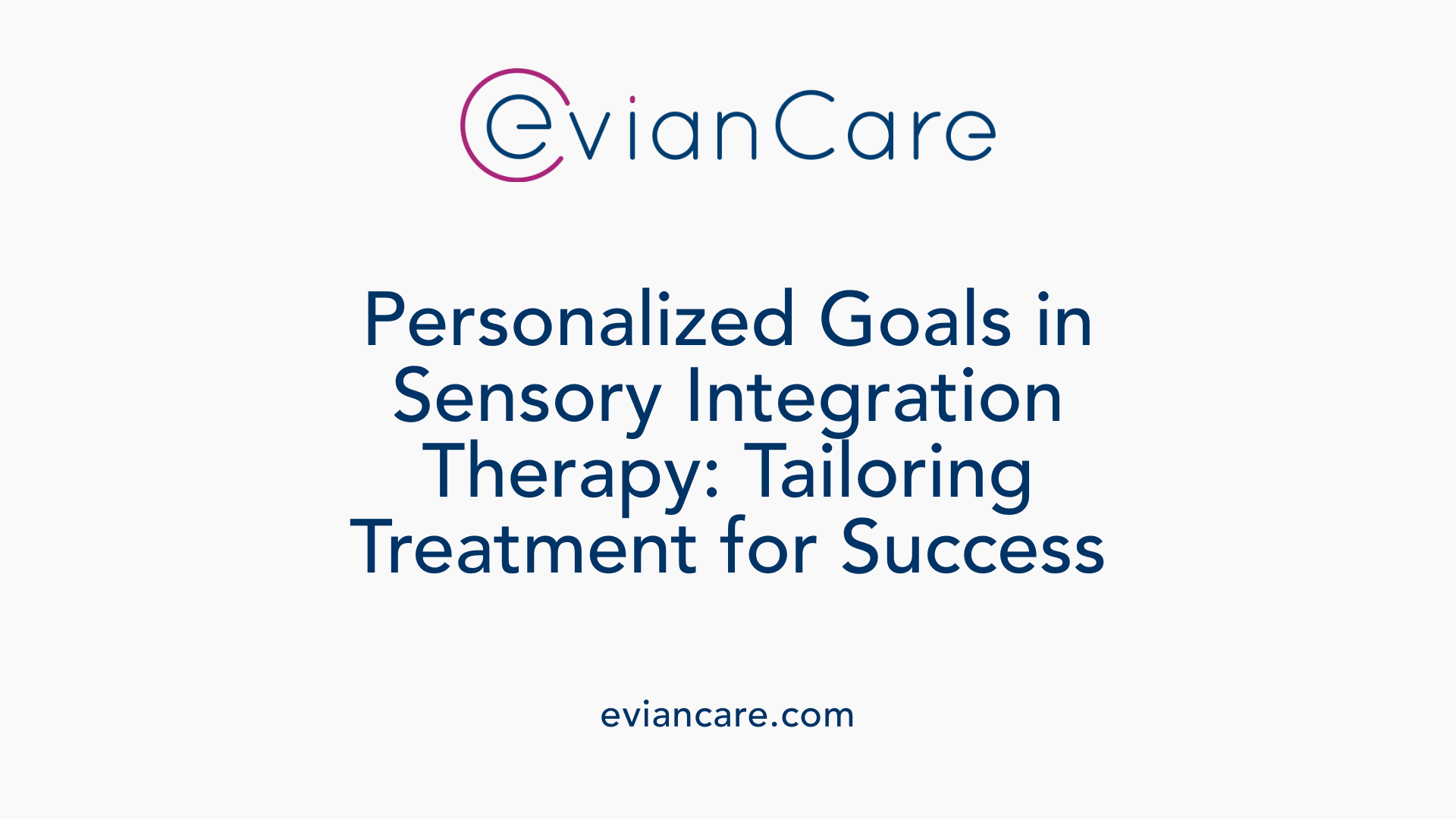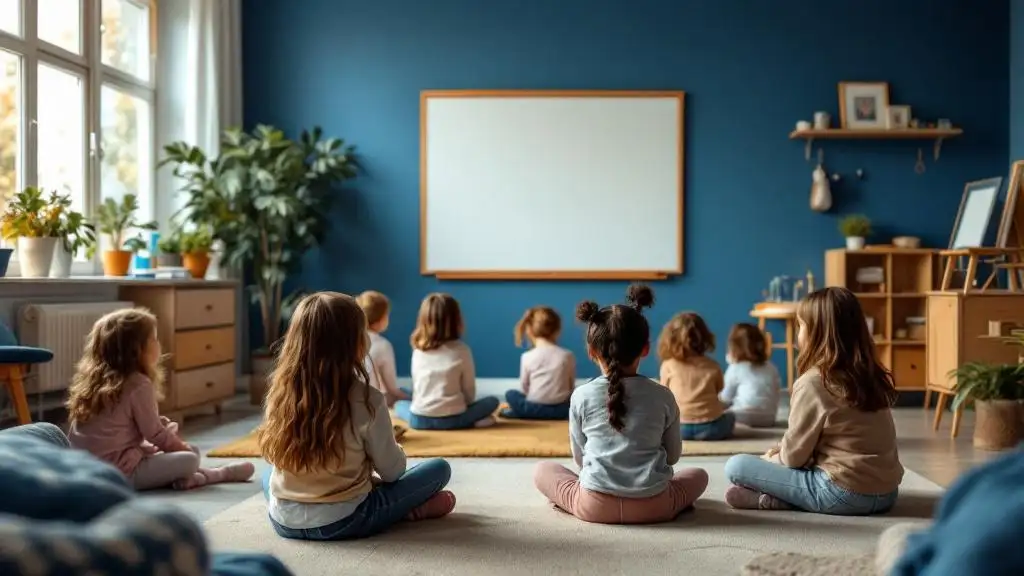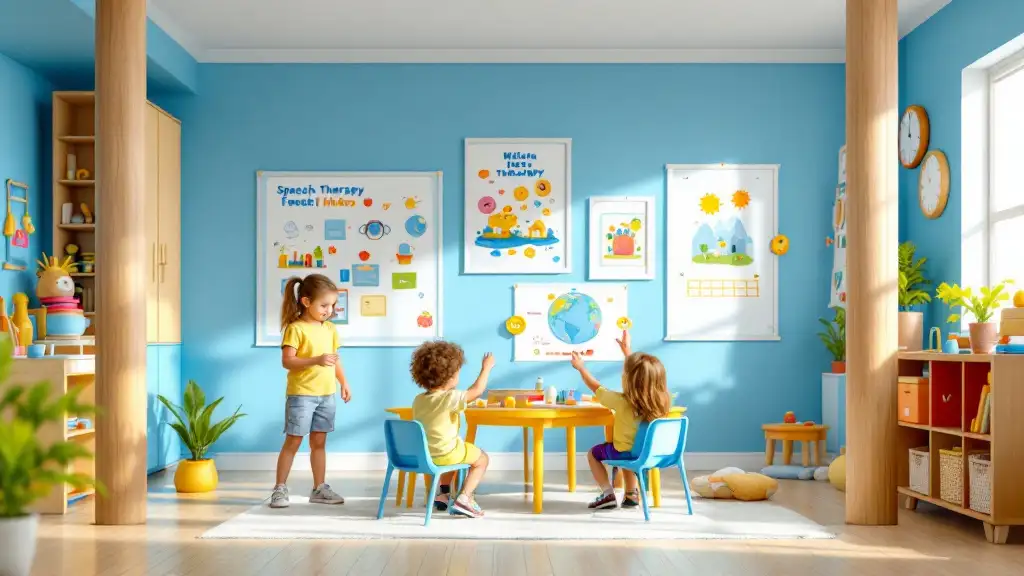
Understanding the Role of Occupational Therapy in Managing Sensory Integration Dysfunction
Occupational therapy is a vital intervention for children experiencing sensory integration issues, often arising within conditions like autism spectrum disorder (ASD), attention deficit hyperactivity disorder (ADHD), and developmental delays. This therapy utilizes personalized, play-based activities designed to help children process sensory information more effectively, thereby improving their daily functioning, social interactions, and emotional regulation. As awareness of sensory processing disorder (SPD) grows, so does the importance of understanding how occupational therapy can create meaningful changes in a child's life.
What is Sensory Integration Disorder and How is it Diagnosed?

What is sensory integration disorder and how is it diagnosed?
Sensory integration disorder (SPD), also called sensory processing disorder, is a condition where the brain struggles to properly receive, interpret, and respond to sensory information from the environment. This includes stimuli from sight, sound, touch, taste, smell, movement, and internal body signals.
Children with SPD may exhibit behaviors such as being overly sensitive to certain textures or sounds, avoiding touch or movement, or seeking excessive sensory input like spinning or touching objects constantly. They might also show clumsiness, difficulty with motor skills, or reactions that seem disproportionate to the stimuli.
Although SPD is not officially listed as a medical diagnosis in many systems like the DSM-5, healthcare professionals—particularly occupational therapists—play a crucial role in identifying it. Diagnosis primarily involves comprehensive assessment methods, including standardized tests, careful observations, and detailed interviews with caregivers. These tools help evaluate the child's responses to sensory stimuli across different senses and identify patterns of over- or under-responsiveness.
The assessment process may involve observing how children react during play, in everyday activities, and in therapy settings. Occupational therapists might also review developmental histories and utilize questionnaires to gather insights from parents and teachers.
Early detection through these assessments enables targeted interventions, such as sensory integration therapy and adjustments to the child's environment. These strategies aim to help children better process sensory information, improve behavior, and enhance overall daily functioning.
Understanding and diagnosing SPD requires a multi-faceted approach, emphasizing personalized evaluation for effective management and support.
The Foundations and Philosophy of Sensory Integration Therapy
What are the common techniques used in sensory integration therapy?
Sensory integration therapy (SIT) employs a variety of activities designed to provide children with controlled, purposeful sensory input. These techniques aim to help children better process and organize sensory information, thereby improving their overall functioning.
Common methods include swinging, which offers vestibular stimulation; brushing and deep pressure activities, such as the Wilbarger protocol using a special sensory brush; massage and joint compressions to provide tactile input; and activities involving movement like bouncing and spinning. These are often integrated into a sensory diet—a personalized plan of sensory activities that children perform throughout the day.
In addition, therapies may incorporate auditory stimuli through music or sound-based interventions, as well as the use of weighted blankets and vests to provide calming deep-pressure input. Equipment like ball pits, swings, trampolines, and tactile tables are routinely used to make these activities engaging.
While these techniques are tailored to individual needs based on comprehensive evaluations, the scientific support for their efficacy remains limited and somewhat inconsistent. As a result, they are often part of a broader treatment approach that includes developing coping strategies and environmental adaptations.
Overall, sensory integration therapy seeks to enhance the brain’s ability to organize sensory information, helping children achieve better motor, social, and emotional skills. The activities are designed to be playful and engaging, which encourages participation and enjoyment, making therapy a positive experience rather than a purely clinical intervention. However, ongoing research continues to examine the long-term benefits and optimal methods of these techniques.
How Occupational Therapy Addresses Sensory Processing in Autism and Other Conditions

How can occupational therapy address sensory processing issues related to conditions such as Autism Spectrum Disorder?
Occupational therapy (OT) plays a vital role in helping children with Autism Spectrum Disorder (ASD) manage sensory processing challenges. Since many children with ASD experience heightened sensitivities or difficulties in integrating sensory input from their environment, OT provides tailored interventions to improve their responses.
Therapists often utilize sensory integration therapy, a play-based approach designed to help children modulate and respond more effectively to sensory stimuli. This involves controlled activities such as swinging, bouncing, spinning, tactile play with textures, and using tools like weighted blankets or vests. These activities aim to 'rewire' the brain's sensory pathways, encouraging better sensory processing and reducing overreactions or sensory-seeking behaviors.
In addition to in-clinic interventions, occupational therapists incorporate sensory tools and modifications into daily environments. For instance, sensory diets—structured routines of sensory activities—are personalized plans that help children regulate their arousal levels throughout the day. Environmental adjustments like quiet zones, dim lighting, or textured stimuli can further minimize sensory overload.
Parent training is a key component, empowering families to continue therapeutic strategies at home and school. Therapists teach caregivers how to use calming tools, implement sensory diets, and create sensory-friendly spaces. The combined effect of these interventions often results in better self-regulation, improved attention, fewer behavioral issues, and enhanced social participation.
While scientific evidence continues to evolve, many families report positive outcomes, including increased concentration, reduced anxiety, and improved social skills. Overall, occupational therapy seeks to help children with ASD better interpret and respond to sensory information, supporting their development and daily functioning.
Effective Strategies and Techniques for Managing Sensory Challenges

What are some effective coping mechanisms for children with sensory processing disorder?
Managing sensory processing disorder (SPD) involves a variety of strategies tailored to each child's unique sensory profile. One of the most effective approaches includes calming techniques such as deep pressure massage, which involves applying firm yet gentle pressure to help soothe and organize the sensory system. Breathing exercises, like slow, controlled inhales and exhales, can also promote relaxation and reduce anxiety caused by sensory overload. Progressive muscle relaxation helps children release tension in their muscles, providing a calming effect.
Structured routines provide predictability for children with SPD, helping them feel secure in their daily activities. Visual schedules, social stories, and countdown timers prepare children for upcoming events, minimizing unexpected stimuli that might cause distress. These routines can create a sense of control and reduce anxiety.
A cornerstone of sensory management is the implementation of sensory diets—personalized activity plans designed to help children regulate their sensory systems throughout the day. Sensory diets often include activities like swinging, tactile exploration with textured toys, jumping, or triggering proprioceptive input through push or pull activities. These are developed in collaboration with occupational therapists and tailored to individual sensitivities and needs.
Creating supportive environments also plays a crucial role. Minimizing loud noises, bright lights, or other overstimulating stimuli can prevent sensory overload. Offering children choices—for example, selecting which equipment to use in a sensory gym or which activity to start—empowers them and reduces stress.
Engaging in regular sensory integration therapy, either through structured sessions in sensory gyms or through guided activities at home, can significantly improve sensory responsiveness. Equipment like weighted vests, cushioned swings, and tactile toys effectively provide calming input.
Overall, combining calming techniques, structured routines, sensory diets, and environmental modifications creates a comprehensive approach to help children with SPD feel more comfortable, regulate their responses, and participate more fully in daily activities.
Goals and Customization of Occupational Therapy for Sensory Integration

What are the goals of occupational therapy for sensory integration, and how are they set?
Occupational therapy (OT) aimed at sensory integration seeks to help children and individuals better interpret, respond to, and manage sensory information from their environment. The primary goal is to improve their ability to participate in daily activities comfortably and effectively.
Therapists work with clients and their families to establish specific, achievable goals based on thorough evaluations. These assessments include observing responses to sensory stimuli, caregiver interviews, and standardized testing to identify sensitivities, aversions, and sensory preferences.
Common objectives include enhancing sensory processing skills, increasing emotional and behavioral regulation, and fostering independence in places like school, home, and social settings. For example, a goal might be to decrease tactile defensiveness so a child can comfortably engage with different textures during meal or play.
Goals are tailored to each individual’s unique profile, priorities, and developmental stage. The collaborative planning process involves input from caregivers, educators, and multidisciplinary team members. By setting meaningful and realistic objectives, therapy remains focused on improving functional outcomes that matter most to the individual and their family.
As therapy progresses, goals are regularly reviewed through progress monitoring. Adjustments are made based on achievements, setbacks, or evolving needs, ensuring that the therapeutic approach remains relevant and effective. This flexible, goal-oriented method promotes meaningful progress while encouraging motivation and engagement in the therapeutic process.
The Role of Families and Environmental Support in Sensory Strategies

How can parents be involved in sensory therapy?
Parents and caregivers play a crucial role in supporting children with sensory processing issues. They are often trained by occupational therapists to understand their child's unique sensory profile and to implement effective coping strategies at home. This includes learning techniques such as the Wilbarger brushing protocol, creating a sensory diet, and establishing routines that provide predictable sensory input.
Parents receive education on how to recognize signs of sensory overload and how to use calming activities to help their children remain regulated. They learn to incorporate sensory activities into daily routines, such as play with tactile toys, movement exercises, or quiet time in designated sensory spaces. Parental involvement enhances the consistency and success of therapy outside clinical settings.
What home adaptations and sensory diets are helpful?
Home adaptations are tailored to each child's needs and aim to create a calming environment. Typical modifications include quiet spaces stocked with sensory toys, weighted blankets or vests, dim lighting, and noise-reducing elements. These environments help children self-regulate and reduce anxiety triggers.
A sensory diet is a personalized plan involving scheduled activities that provide the sensory input a child needs to stay calm and alert. These activities can include swinging, bouncing on a therapy ball, squeezing stress balls, or engaging in tactile exploration like playdough or textured fabrics. Occupational therapists often collaborate with families to develop and adjust these plans based on the child's progress.
How does a multidisciplinary team support children and families?
Effective management of sensory processing issues involves a collaborative approach. Occupational therapists, speech therapists, psychologists, educators, and medical professionals work together to address a child's comprehensive needs. Families are central to this team, providing insights into daily challenges and helping implement strategies.
This teamwork ensures the consistency of sensory strategies across home, school, and therapy settings. Regular communication allows professionals to monitor progress, adjust interventions, and support families in managing sensory behaviors. Such a multidisciplinary approach maximizes the chances of enabling children to participate more comfortably in everyday activities and to develop essential skills for independence.
The Impact and Outcomes of Sensory Integration Therapy in Children
What are the outcomes of occupational therapy for sensory integration?
Occupational therapy focused on sensory integration can lead to several positive changes in children’s behavior and overall functioning. Families and clinicians report improvements such as increased concentration during tasks, better behavior both at home and school, and a noticeable reduction in anxiety levels.
Children often show enhanced motor coordination and better participation in social activities. These therapies help children develop self-regulation skills, enabling them to manage sensory overload more effectively. As a result, many children become more comfortable in various settings, making transitions and routines less stressful.
Although scientific research on the effectiveness of sensory integration therapy is still limited and sometimes inconclusive, anecdotal evidence and clinical experiences suggest that many children benefit significantly. Progress might include improved emotional resilience, greater independence in daily activities, and an increased ability to cope with sensory stimuli.
Long-term benefits of therapy can extend beyond immediate sensory regulation. They may include better adaptive skills, improved social interactions, and enhanced overall quality of life. Regular assessments allow therapists and families to refine goals and interventions, ensuring continued progress and maximized therapy outcomes.
| Outcome | Description | Additional Notes |
|---|---|---|
| Increased concentration | Children focus better during tasks and play | Leads to improved academic and social engagement |
| Behavioral improvements | Reduction in problematic behaviors like tantrums | Enhances interactions and compliance |
| Decreased anxiety | Children feel calmer in stressful situations | Supports emotional well-being |
| Motor and social skills | Better coordination and peer interaction | Facilitates participation in group activities |
| Long-term development | Better emotional regulation and adaptive skills | Contributes to overall development |
Overall, sensory integration therapy can serve as a foundation for ongoing development, helping children lead more balanced and fulfilling lives. Parents and therapists work together to tailor interventions, fostering meaningful and enduring improvements in children's sensory processing and daily functioning.
Empowering Children for Better Living through Sensory-Focused Interventions
Occupational therapy offers a comprehensive, individualized approach to addressing sensory integration dysfunction in children. By employing techniques rooted in Ayres's theory and emphasizing play and everyday activities, therapists help children develop critical sensory and motor skills. The involvement of families and caregivers ensures that progress extends beyond clinical settings into everyday routines. Through continued research and clinical practice, occupational therapy serves as a vital tool in helping children with sensory processing challenges thrive, participate fully, and live more comfortable lives.
References
- Treating Sensory Processing Issues - Child Mind Institute
- Sensory Processing Disorder (SPD): Symptoms & Treatment
- Sensory Integration Therapy in Paediatric Rehabilitation - Physiopedia
- Occupational Therapy for Sensory Processing Disorder - ASD Clinic
- Sensory Integration - StatPearls - NCBI Bookshelf
- How Can Occupational Therapy Help with Sensory Issues?
- Occupational Therapy & Sensory Issues
- Sensory Integration Therapy - HealthyChildren.org
- Sensory Integration Therapy | Treatment | Services - OT for Kids












